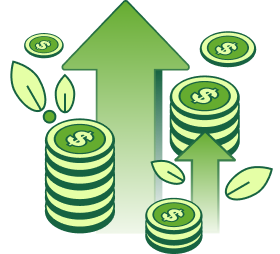Key takeaways
- Hardship loans can provide quick financial relief during emergencies.
- Many online lenders and credit unions offer hardship loans to borrowers with poor credit or thin credit histories.
- Always compare loan terms and avoid predatory lenders that charge excessive interest rates and fees.
Losing your job, going through a divorce, or dealing with medical bills can put you in a tough spot financially. If you feel stretched thin and cannot pay your bills, a hardship loan could help you regain your stability.
Before resorting to borrowing to make ends meet, verify that it is the best option. More debt can lead to a heavier financial burden.
Let’s take a closer look at hardship loans and explore potential options.
What is a hardship loan?
A hardship loan is a personal loan that can help you get by when you’re struggling financially. The money can cover unexpected expenses, essentials like rent, or gaps in pay because of job loss. Many nonprofits and credit unions offer hardship loans for individuals facing sudden medical or financial crises.
You often receive a lump sum of $100 to $100,000 that you pay back in equal monthly payments with interest. Repayment terms range from two to seven years, and annual percentage rates (APRs) from 6% to 36%. Generally, the lower your credit score, the higher the rates and fees will be.
Less than ideal credit hardship loans often come with origination fees of 1% to 10% of the loan amount. The lender deducts the money upfront, reducing the amount you receive. You may also be subject to other fees, such as an administrative fee or a prepayment penalty.
Most lenders deposit the funds directly into your bank account within one to two business days of approval.
How do you qualify for a hardship loan?
Qualifying for a hardship loan depends on your income and credit score. Many lenders offering emergency hardship loans understand that applicants are facing unexpected crises. In return, they will review your whole financial picture.
Credit unions and online lenders are more likely to approve applicants with poor credit or limited credit history. They may offer hardship loans for poor credit, flexible credit evaluation, by focusing more on your current income and bank activity.
Dealing with a financial emergency?
How to get hardship loans for poor credit
Obtaining can be challenging, but taking the right steps can make it easier.
1. Review your credit report
You can get a free copy of your credit report once per year from annualcreditreport.com. Look for any errors or outdated accounts that could be negatively impacting your score.
While you’re at it, check your credit score. Knowing your score helps you understand the loan options that might be available to you. Even with a 500 credit score, some lenders may still be willing to work with you. These lenders would either have low minimum credit score requirements or offer hardship loans with flexible credit evaluation.
2. Compare lenders that work with less than ideal credit borrowers
Not all lenders treat less than ideal credit the same. Search specifically for lenders that have low minimum credit scores and income requirements. Before applying for hardship loans for less than ideal credit online, compare lenders to find the most affordable option.
One way to do this is to check eligibility without affecting your score with a soft credit inquiry. Prequalifying helps you gauge whether you will receive approval and see potential terms and conditions. You can then compare the APRs, fees, and repayment terms before submitting your formal application.
3. Consider a co-signer or collateral
A co-signer with good credit can improve your chances of approval with decent terms. Lenders are more likely to approve you and at a lower rate since your co-signer will pay if you default.
Alternatively, you could offer collateral (like a vehicle or savings account) to secure better terms. If you do not pay as agreed, the lender can seize your asset to recoup their losses.
4. Prepare the essential documents for the application
Having your documents on hand can speed up the process. Most lenders require proof of income, a government-issued ID, recent bank statements, and possibly documentation of your financial hardship.
5. Request a short-term loan for a small amount
Smaller loan requests, such as a or a , may be easier to qualify for. Borrowing a smaller amount poses less risk to the lender, so they are more likely to approve your application.
Lenders often provide small amounts through short-term money loans. Read the repayment terms carefully and be cautious with fees, as they can be high. Only borrow what you can repay comfortably.
Financial hardship loans to avoid
When you’re in a financial crisis and , it’s easy to fall for loans that promise access funds to meet urgent needs with no questions asked. But some types of loans can easily trap you in a cycle of debt.
Here are four financial hardship loans to avoid, even if they seem like your only option.
Payday loans
are appealing when you’re short on time and money, but be cautious. They often come with short terms, balloon payments, and fees equivalent to triple-digit APRs. Most consumers cannot repay the loan in full by their next payday and have to roll it over or take out another loan. Extending the loan can easily lead to a cycle of debt.
Pawn shop loans
Pawn shop loans offer quick cash by using valuable items (such as jewelry, electronics, or collectibles) as collateral. You may receive a without a credit check, but you risk losing your valuables if you can’t repay. Better alternatives exist that don’t involve handing over your possessions for temporary relief.
No-credit check loans
Some lenders advertise . No-credit-check loans often come with exorbitant fees and questionable terms. Lenders that promise approval or fail to conduct a thorough credit check are frequently predatory. Always be wary of guarantees that sound too good to be true.
Car secured loan using your vehicle titles
let you borrow against your vehicle’s title, but they’re extremely risky. They come with high fees, often up to a 300% APR, and short repayment terms. Default on the loan and the lender can repossess your car.
You can get a loan without a job!
Hardship loan types for less than ideal credit
While there’s no true “approval depends on meeting eligibility criteria,” some options are more accessible for people with poor credit. The following can offer relief, even if you’ve been denied elsewhere.
401(k) hardship loan
When you , you may be able to make a 401(k) hardship withdrawal. Financial needs that qualify for hardship withdrawals include medical bills, expenses related to natural disasters, preventing eviction, educational expenses, and funeral expenses for eligible individuals. Not all plans cover every hardship.
While you can access funds, you will have to pay income tax and may incur a 10% early withdrawal penalty if you are under 59½. A 401(k) loan may be a better option, but you will need to repay the money, plus interest, promptly.
If you take money early from your retirement account, you lower your savings. By reducing your savings, you miss out on possible investment growth.
The answer is usually no. Early withdrawals from your retirement plan are subject to taxes and penalties unless you qualify under specific hardship exceptions.
Paycheck advance apps
offer small loans based on your income and pay schedule. Their purpose is to help cover short-term gaps with no interest charges apply and minimal fees. Most don’t require a credit check, but you will need to link them to your bank account.
While short-term loan due on your next payday apps are less expensive than traditional short-term loan due on your next paydays, the fees can still add up if you use them frequently. They’re best for occasional use, such as when you need a and can afford a smaller paycheck.
Payday alternative loans (PALs)
from federal credit unions are a safer option than traditional short-term loan due on your next paydays. PALs have lower fees, reasonable interest rates, and more manageable repayment terms. They’re a strong option for people with limited credit history or low credit scores. You must be a member of a credit union for at least one month to qualify, and not all credit unions offer PALs.
Home equity loans or lines of credit
If you own a home, consider a home equity line of credit (HELOC) or a home equity loan. The choice between a depends on your needs.
HELOCs offer flexible access to funds at a variable rate. Home equity loans provide a lump sum with fixed monthly payments. Either way, the interest rate will be lower since your home secures the loan.
These are among the , but they do require good equity and put your home at risk if you default.
Buy now, pay later (BNPL)
BNPL services allow you to split payments into installments, often without interest, provided you pay on time. The most common model is pay-in-four. You pay 25% of the cost at checkout and the rest in bi-weekly equal installments.
While not traditional loans, BNPL services can help you manage urgent purchases and increase cash flow. Use them judiciously. Making too many BNPL purchases at once can easily lead to overspending and missed payments. Missed payments can hurt your credit and result in fees.
Frequently asked questions
1. Are hardship loans real?
Hardship loans are real. They are personal loans that help individuals facing financial emergencies, such as job loss, medical bills, or unexpected expenses. Banks, credit unions, and online lenders all provide hardship loans. While terms vary, hardship loans often give quicker access to funds than traditional personal loans.
2. How much can you borrow with a hardship loan?
The amount you can borrow depends on the type of hardship loan and the lender. Short-term no-credit-check loans are typically for smaller amounts, ranging from $100 to $500. Online lenders and credit unions offer installment loans for larger amounts up to $100,000.
3. Why consider a hardship loan if you’re struggling financially?
A hardship loan can provide fast access to funds to help you cover rent, utilities, or medical expenses. The idea is to help you cover essential bills without trapping you in a cycle of debt.
4. How can I get emergency cash immediately?
To get , consider earned wage access apps, BNPL services, and PALs. Look for online lenders and credit unions with lenient requirements and fast approval.
5. How can I get money if I’m struggling?
Consider exploring community assistance programs, borrowing from friends or family, or applying for . Even with poor credit, some online lenders and credit unions will approve you for installment loans. Additionally, consider selling unused items, taking on a gig job, or contacting a nonprofit credit counselor for assistance.
Bottom line
Whenever you borrow money, it’s essential to have a plan in place to repay it. Even if you’re facing an emergency expense, having a repayment plan is essential. A hardship loan can dig you further into debt if you are not careful. While anyone can borrow the right loan, a repayment plan can make all the difference.




